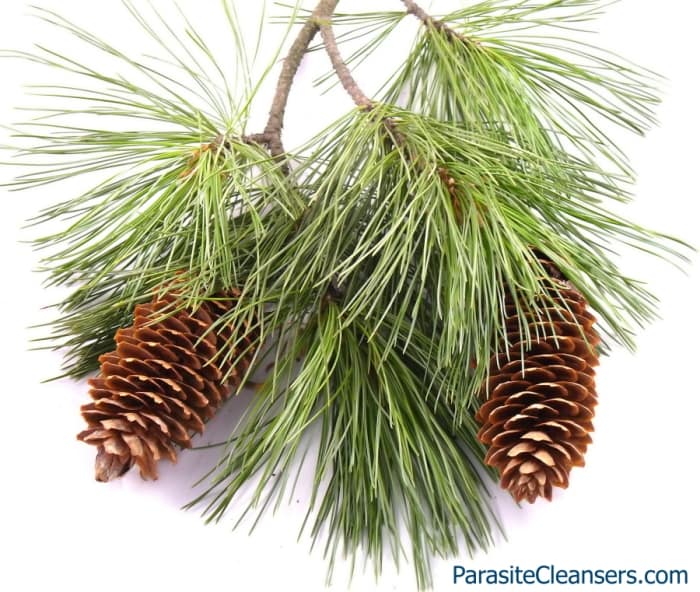Turpentine parasite cleanse

When you think of the word turpentine the image of paint thinner and poison probably come to mind. It is easy to get confused. Turpentine oil is derived from pine trees and has been used by artists as a solvent for paints and varnishes. Other paint thinners are made from solvents that include petroleum bi-products called mineral spirits and Naphtha. The words turpentine and paint thinner are not interchangeable. Not all paint thinner is made of Turpentine.
Turpentine oil naturally derived from trees has been used as a natural remedy for a variety of health problems for hundreds of years. It has been a popular herbal remedy to treat muscle, nerve and joint pain caused by rheumatism, mainly rheumatoid arthritis (Citations 1,2). Its vapors are used to reduce chest congestion that is associated with various types of lung disease and is an ingredient in Vicks VapoRub. It can help to remove heavy metals from your system. It even has properties that fight against cancer. Turpentine oil is used as a flavoring in the food and beverage industry. And in manufacturing, turpentine oil is used in many household products from soap to cosmetics. But did you know that small amounts of turpentine oil can also help to kill parasites in humans?
Who knew that tree sap could be good for health?
Turpentine (also called spirit of turpentine, oil of turpentine, gum turpentine). Turpentine is a name applied to numerous semi-fluid oleoresins obtained from coniferous trees. It is a volatile pungent oil distilled from any of a number of trees that yield turpentine, mostly pine wood varieties. Turpentine is composed of terpenes, mainly the monoterpenes alpha-pinene and beta-pinene with lesser amounts of carene, camphene, dipentene, and terpinolene. (citation: 3)
Traditional medicinal that used turpentine made A clear distinction between turpentine oil and the steam-distilled wood turpentine, with only the former accepted for use medicinally. (citation: 1). Although that distinction is probably no longer relevant since we are only concerned with the chemical composition.
Rectified turpentine was used in human and veterinary practice as a stimulant diuretic, anthelmintic, carminative, and expectorant (Citation: 4)
In the USA Turpentine is made by distilling pine resin from pine trees mainly located in the south.
Pure gum spirit is extracted from terebinthinate trees, in the USA these trees grow in a variety of regions and are common.
Early uses of turpentine date back to biblical times. Terebinth, as it is called in the Bible, was used for its natural healing properties. The Bible describes several natural remedies used in healing. The word sori (ordinarily “balm”, preferably “terebinth resin”) appears six times in the Bible. (Citation: 5)
It is believed that Magellan included turpentine in his list of medicines that he brought with him on his voyage due to its effect on combating internal parasites as well as external mites like lice and scabies.
Its use in modern medicine became popularized with the publication of The medical journal titled ” Annals of the Homoeopathic Clinic.” Written by Hartlaub and Dr. Trinks in 1834. (Citation: 6) Its inclusion in medical literature remained well into the early 20th century (Citation: 7) It has fallen out of use in medicine today possibly due to its potentially toxic nature when taken in excessive quantities but still remains popular as a home remedy.
How does turpentine help to kill parasites?
From what I’ve read the ONLY acceptable Turpentine that can be used is “100% pure gum spirits of turpentine”. Look for a provider that specifically recommends use in humans. Do NOT get the packaging for art supplies, aromatherapy or industrial use.
The recommended dose is few drops up to one teaspoon of turpentine a day on a sugar cube. Doses of 15ml to 150ml can highly be toxic in humans.
The lethal dose for adults has been given as 60 to 100 g, 120 to 180 ml or about 2 ml/kg body weight (Citations: 8,9,10)
Turpentine is toxic to a variety of Fungi like candida, Internal parasites like tapeworm, and external mites like scabies and lice and even bacterial infections.
References
- http://naturaldatabase.therapeuticresearch.com/nd/PrintVersion.aspx?id=508 retrieved 9/1/2017 – Therapeutic Research Center – Natural Medicines Comprehensive Database
- WebMD http://www.webmd.com/vitamins-supplements/ingredientmono-508-TURPENTINE%20OIL.aspx TURPENTINE OIL OVERVIEW INFORMATION Retrieved 9/1/2017
- Turpentine – (Turpentine Oil, Wood Turpentine, Sulfate, Turpentine, Sulfite Turpentine) [8006-64-2] Review of Toxicological Literature Prepared for Scott Masten, Ph.D. National Institute of Environmental Health Sciences Submitted by Karen E. Haneke, M.S. Integrated Laboratory Systems February 2002 Retrieved September 1, 2017. https://ntp.niehs.nih.gov/ntp/htdocs/chem_background/exsumpdf/turpentine_508.pdf
- REMINGTONS PRACTICE OF PHARMACY 1961 12TH EDITION MARTIN AND COOK; Baxter, C. S. 2001. Alicyclic Hydrocarbons. In: Patty’s Toxicology, vol. 8: Chapter 50. 5th ed. Bingham, E., B. Cohrssen, and C.H. Powell (Eds.). John Wiley and Sons, Inc., New York, NY; pp. 710-1080.
- Life in biblical Israel, By Philip J King, Lawrence E Stager, Westminster John Knox Press, 2001, pg 80
- http://www.homeoint.org/seror/biograph/hartlaub.htm retrieved 9/1/2017
- A Dictionary of Practical Materia Medica, Volume 2 pg 1393 By John Henry Clarke 1901
- 2012. Turpentine [MAK Value Documentation, 2002]. The MAK Collection for Occupational Health and Safety. 316–332. Retrieved 9/1/17 – http://onlinelibrary.wiley.com/doi/10.1002/3527600418.mb800664e0017/full
- Moeschlin S(1964) Klinik und Therapie der Vergiftungen. 4th ed, Georg Thieme Verlag, Stuttgart, p 578
- Troulakis G, Tsatsakis AM, Tzatzarakis M, Astrakianakis A, Dolapsakis G, Kostas R(1997) Acute intoxication and recovery following massive turpentine ingestion: clinical and toxicological data. Vet Hum Toxicol 39: 155–157
Watch Videos To Learn More

